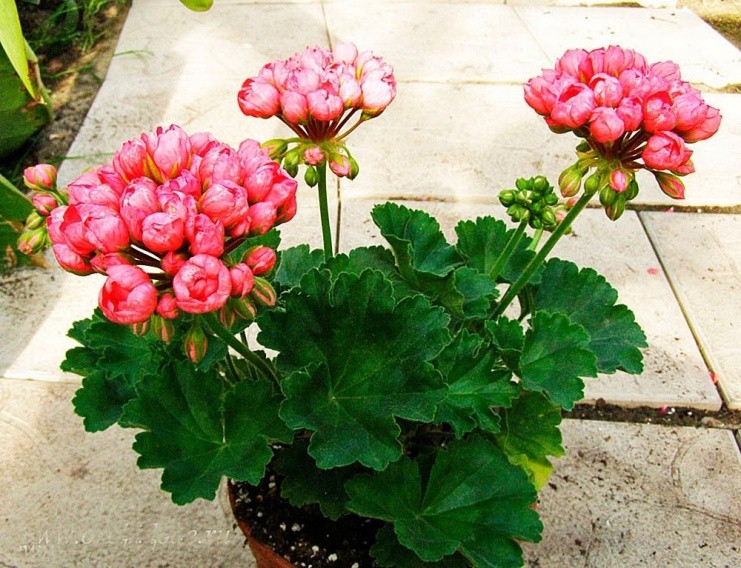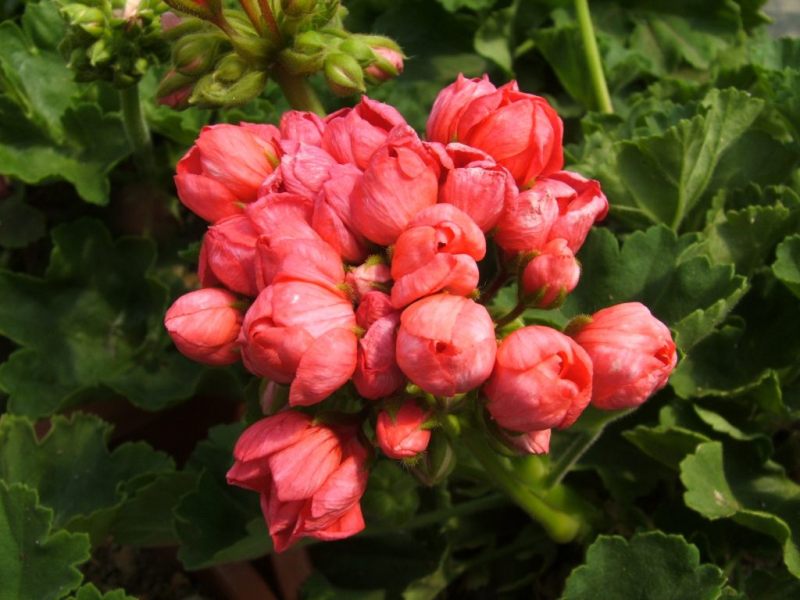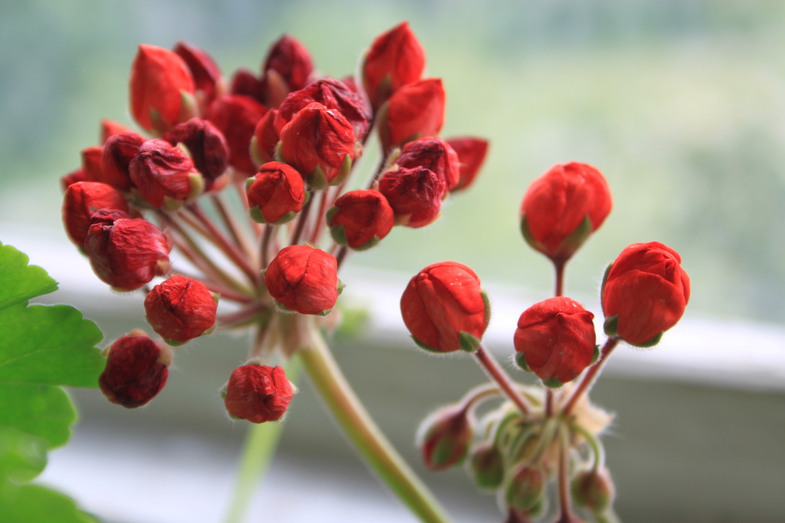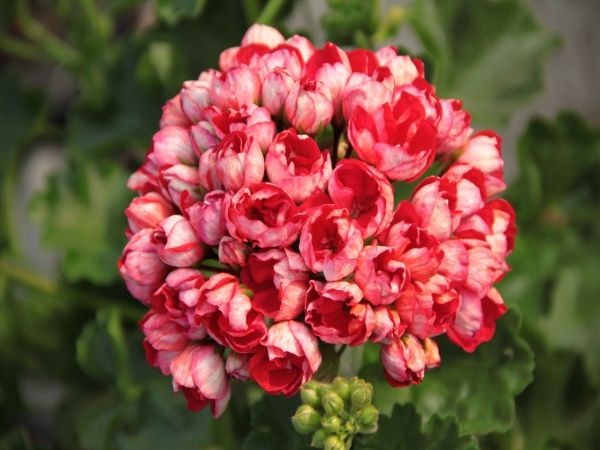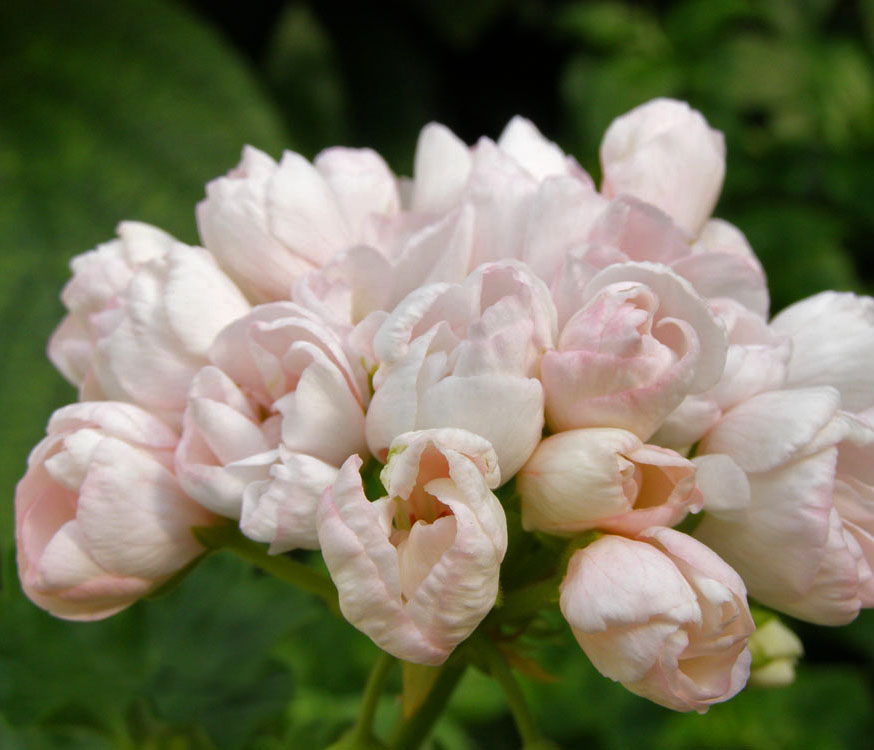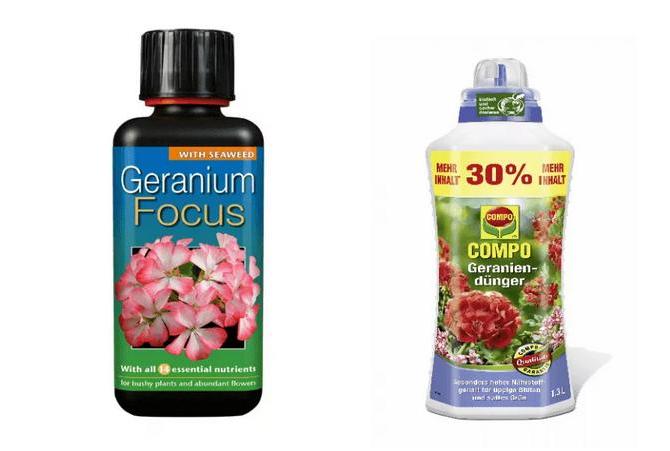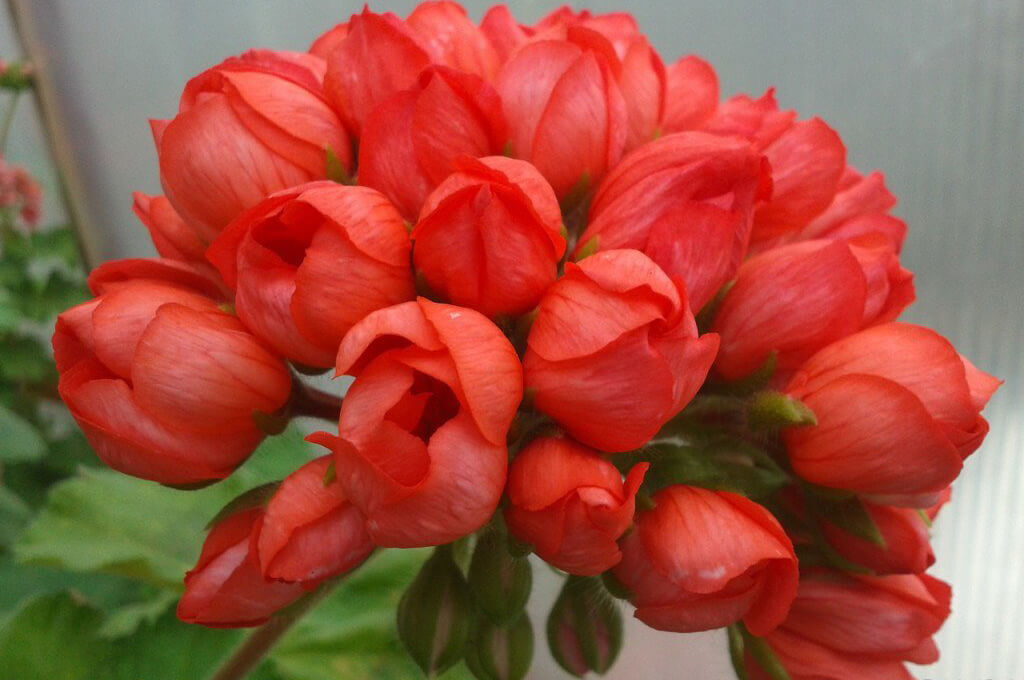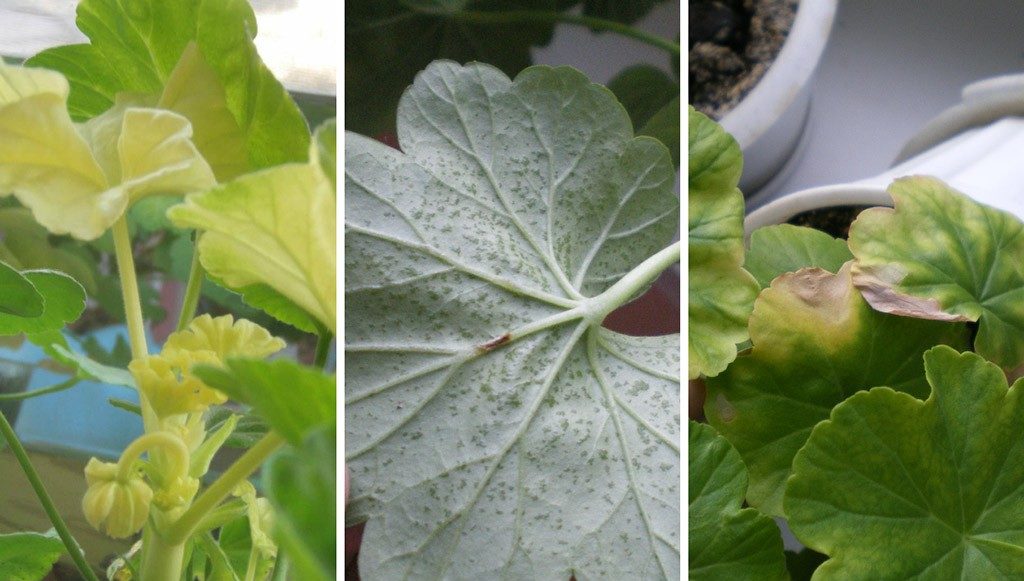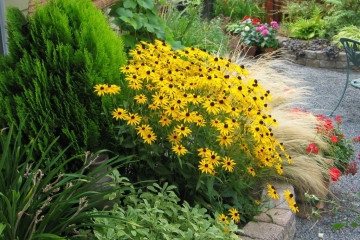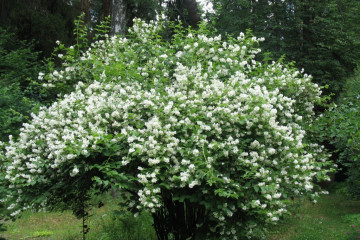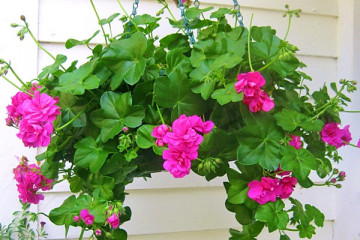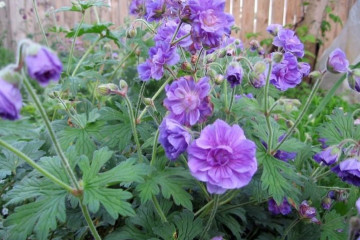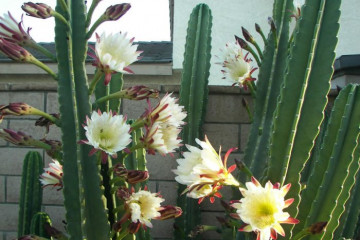Geranium tulip - popular varieties for the home
Content:
Geranium is a flower known to almost everyone. Inflorescences of an unusual shape and a wide palette of shades will decorate any home or office. There are a lot of varieties of culture, differing not only in color, but also in the shape of the leaves and the size of the plant itself.
Geranium tulip - what kind of flower is it, what family it belongs to
The flower belongs to the Geranium family. Tulip varieties have several differences from ordinary geraniums. The inflorescences of the species consist of numerous flowers that outwardly resemble tiny tulips.
Brief description, history of origin and selection
Tulip geranium was bred by breeders. The first mention of the species was found in the editorial board of a horticultural magazine published in 1966 in Boston. Geranium first appeared in Europe only 10 years later. Florists believe that this species was obtained as a result of natural mutation of other varieties.
Varieties of indoor plants with names, what they look like
There are many varieties of tulip pelargonium that can be grown both at home and in the garden. Varietal varieties can have different colors and shapes of leaves.
Patricia andrea
Small reddish pink flowers and dark green leaves are the hallmarks of this variety. The outer part of the petal has white streaks.
Red pandora
Red Pandora Pelargonium is of medium size. The inflorescences of this geranium consist of a large number of pink petals with red, pronounced veins. The velvety stem and leaves are dark green. With timely feeding, Red Pandora pelargonium can grow up to one meter.
Conny
The densest inflorescences of this variety are collected in a ball. The pink flowers look like an unopened bud. The petals are colored darker on the inside, and the outer side of the pink has dark streaks.
Pelargonium Emma fran Bengtsbo
Pelargonium Emma fran Benstigo or Bengsbo is the most spectacular and elegant flower variety. The plant has long and sharp buds. Pelargonium Emma is colored light pink and has a pastel shade. Green leaves have a velvety texture.
This type of culture has been the most demanded one for many years, albeit an expensive one. Only in the Pelargonium tulip variety Emma, the size of the bush can vary from 40 to 60 cm.
Herma
Herma pelargonium is the smallest member of the species. The flowers of the plant are orange-red in color, collected in a very lush inflorescence, which can consist of 30-40 flowers. The leaf plates have carved edges and a light green hue.
Marbacka Tulpan
A distinctive feature of the variety is its beautiful creamy pink flowers. Terry inflorescences look like a rose. Varietal feature - low peduncles and green leaves covered with hairs.
How to care for geraniums at home
Caring for tulip varieties is identical to the rules for caring for ordinary geraniums. Compliance with the temperature regime, lighting standards and watering are the most important aspects of growing a beautiful healthy flower.
Illumination and temperature conditions
Geranium requires diffused light. When exposed to direct sunlight, the plant will inevitably get burns. In winter, daylight hours should be at least 12 hours; phytolamps are perfect for this. An elongated stem and an unhealthy plant appearance are the main signs of insufficient illumination of pelargonium.
In summer, during the flowering of the culture, the air temperature should be kept at +22 degrees, and in winter it is allowed to drop to +14 degrees.
Watering rules and humidity
Home care for tulip geraniums implies timely watering of the plant. The flower is extremely sensitive to excess moisture. At elevated temperatures, watering is carried out no more than 3 times a week, in winter - 1 time in 7 days. Determine the lack of watering by the presence of brown spots on the lower leaves of the tulip geranium.
Top dressing and soil quality
Pelargonium tulip is very sensitive to excess fertilization. The plant grows instantly and practically stops blooming. In spring and summer, it is necessary to apply liquid fertilizers containing potassium and phosphorus to the soil. The frequency of dressing is twice a month.
Flower container size
Clay or wooden containers are considered the best container for a flower. The size of the pot should be slightly larger than the root system of the plant. Most suitable pot size for tulip geranium:
- 15 cm high;
- 12 cm in diameter.
If you plan to grow several bushes in one pot at once, then the size of the pot should be proportionally larger.
Pruning and replanting
The tulip geranium is pruned in the spring. During this period, you must carefully remove the old and too long shoots. After the procedure, the cuts are treated with charcoal, and the flower is fed with fertilizers to maintain immunity.
Features of flowering plants
If the rules of care are not followed, the inflorescences change their shape and turn into ordinary geranium flowers. To preserve the specificity of the variety, you need to adhere to the following rules:
- Timely pinching of the shoots will help maintain the bushiness of the pelargonium.
- Careful and constant control of the plant should include removing dried or wilted flowers.
- When several ordinary flowers appear, they must be cut off.
- Airing the room and drafts can destroy the plant.
A period of activity and rest
At the time of active growth, geraniums must be fed with potash and phosphorus fertilizers.
In winter, tulip geraniums have a dormant period. At this time, the flower must be moved to a cool place. The most acceptable temperature is + 10 ... +12 degrees.
Types and shape of flowers
Geranium flowers are painted in a wide variety of colors and are mainly collected in large inflorescences. Each flower of the plant is endowed with several petals, the edges of which can be jagged or remain smooth. The inflorescences consist of 20-30 flowers.The name of the species is due to its external resemblance to tulips. Of all the varieties of tulip geraniums, the most unusual stands out, the flowers of which are more like small roses. Because of this, it is called Pelargonium rosebud Emma.
Flower reproduction methods
There are two methods of propagation of tulip geraniums: cuttings and seeds. To select a specific method, you should study the description of the breeding process.
Seed propagation
For propagation of geraniums by seeds, winter is best suited. Sowing of seed is carried out superficially. Greenhouse conditions are a prerequisite for the survival of a flower. When the first leaves appear, a pick is required. Only after 50-60 days, young plants can be transplanted into pots.
Propagation by cuttings
Apical propagation cuttings can only be used in the summer. Cutting is carried out along the knot. For rooting, at least 3 leaves must remain on the sprout.
The seedlings are lowered into the water until the root system is formed. When the cuttings have roots, they must be transplanted into a pot. For pelargonium, you need to use nutrient soil. After planting, the plant is placed on the sunniest windowsill.
Growing problems, diseases and pests
Geranium is not immune to disease. The main signs of flower ailments:
- The appearance of white circles on geranium leaf plates. This is the first sign of rust.
- Gray loose spots on the lower part of the leaf. This symptom indicates infection with gray mold.
- Stems and leaves take on an unhealthy red hue if the flower is frozen.
Pelargonium is most often affected by the following pests:
- whitefly butterfly;
- spider mite;
- mealy worm.
How to deal with them
In case of an invasion of any harmful insects, the treatment with soapy water or spraying with insecticides will help to save the plant. The most effective remedies:
- Fitoverm;
- Fufa-Nova;
- Aktara.
Means of a new generation perfectly protect flowers, not only as a preventive measure, but even during the period of illness. If signs of disease are found, it is imperative to remove all infected leaves.
The tulip subspecies of geranium requires care and attention, but compliance with all the rules will invariably allow you to grow a beautiful flower with the most abundant flowering. Huge caps of inflorescences of this amazing species will not leave anyone indifferent.
